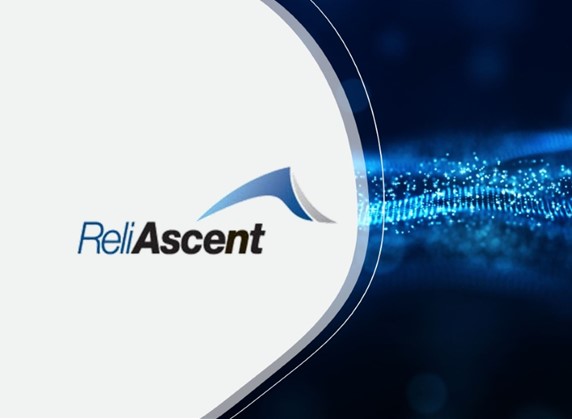
Cost and Pricing Data Explained
A little history for government contractors: the DCAA tripled the number of Defective Pricing Audits in FY 2020, once their extensive backlog of Incurred Cost Audits had finally been eliminated in 2019. However, along with that shift in 2020, came the COVID pandemic (and trillions of dollars of aid as well as government contracts & grants). Not only will DCAA continue this focus, but now some of those organizations that were awarded contracts and grants related to COVID may also be at risk of a a Defective Pricing Audit.
Given this, now is an excellent time to revisit cost and pricing data, TINA, FAR Part 15, and what they all mean for government contractors. The following blog is taken from a popular white paper, written by ReliAscent Account Executive, Dave Donley. It provides valuable insights into these topics and is a terrific resource for new government contractors.
As always, we encourage all Federal Government Contractors and Grantees to subscribe to the ReliAscent Blog and White Paper Distribution List to stay informed and contact us if you ever have any questions about DCAA compliant accounting, contract management, or business and financial management services.
Cost and Pricing Data: What the Government Needs
The need for providing cost and pricing data is primarily found in FAR Part 15 – Contracting by Negotiation, where the government seeks “the best value” for a particular acquisition based on competition. This pricing and proposal environment is much different than that found within the other methods of government acquisition:
- FAR Part 12 – Acquisition of Commercial Items
- FAR Part 13 – Simplified Acquisition Procedures
- FAR Part 14 – Sealed Bidding
Contractors should review solicitations carefully to evaluate what “acquisition lane” they find themselves in. However, regardless of the solicitations type, when only one qualified source is identified, sole source requirements fall back to FAR Part 15 and generally require more detailed cost and pricing data.
Two Paths for Providing Cost and Pricing Data
The requirement for cost and pricing data can take two paths, but they both end with the government’s need to determine a “fair and reasonable” price. Both paths require a detailed description of all cost elements, including project costs, indirect costs, and fee. The table at FAR 15-4 (buried in FAR 15.408) outlines the specific cost data required.
A contractor unfamiliar with this area of FAR may have to stand up a unique pricing system in response. Contractors may also receive a “cost model” from the government buying agency to fill out that substantially includes all the elements of an appropriate cost and pricing submission. The government’s expectation is that a prime contractor will also apply some level of scrutiny to major efforts proposed by vendors, perhaps including submission of additional vendor detailed cost and pricing data.
Cost and pricing data requirements also apply to contract changes.
Certified Cost and Pricing
The Truth in Negotiations Act (TINA) requires cost and pricing data be certified as “accurate, complete, and current” by contractors upon conclusion of negotiations. Cost or pricing data are defined broadly as facts that prudent negotiators would expect to significantly affect price negotiations. During the post-award phase of a contract, the government may allege that proposal data was found not to be accurate, complete, and current as certified and is therefore defective. Allegations of defective pricing may lead to contract and subcontract price reductions, monetary penalties, and exposure to a false certification claim under the False Claims Act.
Exceptions
Thankfully, there are notable exceptions to providing certified cost and pricing data. Prices determined through comparing competitive prices and commercial item purchases are two such exceptions. The exception making recent news is the one based on the value of the acquisition. Up through June of 2018, the acquisition threshold for providing cost and pricing data stood at $750,000. On July 1, this threshold was lifted to $2,000,000.
Additional Exceptions for “Innovative Technology Projects”
In addition, the exception limit rises to $7.5 million for small businesses or “non-traditional defense” contractors and their subcontractors for:
- A technical, merit-based selection procedure, such as a broad agency announcement
- The Small Business Innovation Research program, or
- The Small Business Technology Transfer program (SBIR/STTR)
Techniques to Reduce Risk
Here are just some of the ways a contractor can reduce its risk of a “defective” proposal:
- Demonstrate commercial prices by selling products and services to non-government entities.
- Develop a pricing strategy that ensures profitability. Develop an indirect rate structure that generates consistent, equitable and profitable results among all potential jobs.
- Use the small business exceptions when bidding on Innovative Technology Projects.
- Select someone to fulfill the role of pricing expert or manager within the organization.
- Manage subcontractor and vendor quotes.
- Before settlement on price, perform a “sweep” of all cost and pricing data, including vendor quotes, to ensure its correctness, accuracy, and completeness.
- If the government is entitled to certified cost and pricing data, don’t sign a certification until after negotiations are complete.
ReliAscent Assistance
As always, you can rely on ReliAscent if you have further questions related to cost and pricing data or allegations of defective pricing. Contact us today to learn more about our government accounting and contract management services, and how we can help.